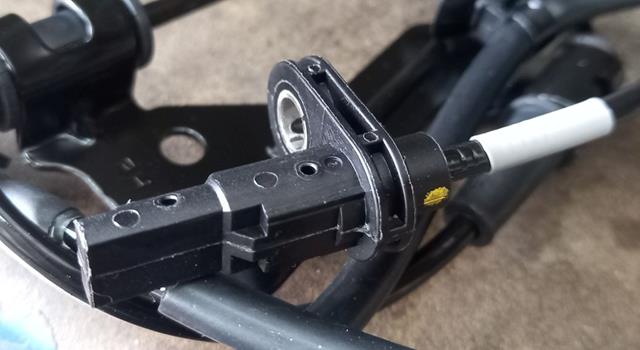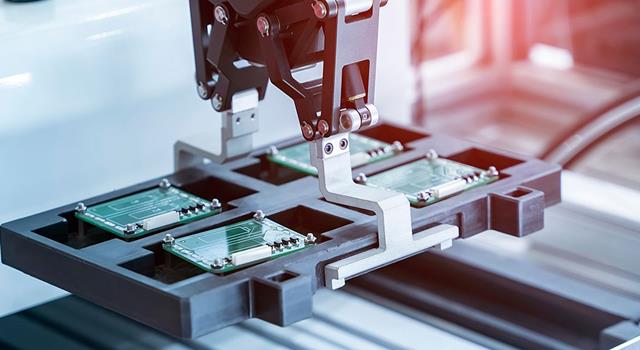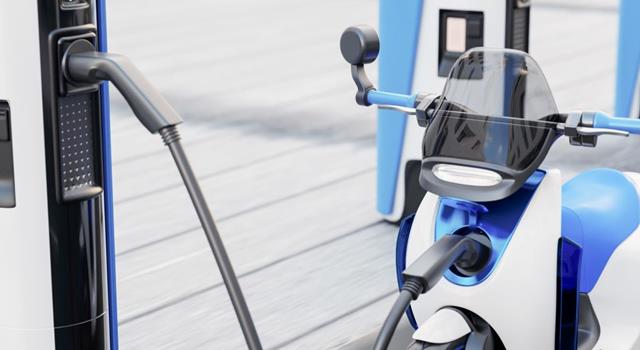In the world of rechargeable batteries, selecting the correct charging method is crucial to ensuring optimal performance and extending battery life. With a variety of battery types and applications, it's essential to understand the different charging methods available and how they impact the longevity and safety of your batteries.
In this guide, we’ll explore the most common battery charging methods, including constant current, constant voltage, pulse charging, and more, helping you make informed decisions for your specific needs.
Constant Current Charging
What is Constant Current Charging?
Constant current charging is a method where the charger maintains a steady flow of current to the battery, adjusting the voltage as needed to ensure the current remains constant. The charger typically switches off when the battery reaches its full charge voltage.
How It Works
This method involves continuously supplying a fixed current to the battery until the voltage reaches the desired level. The charger carefully monitors the battery’s voltage and stops charging once it reaches a full charge, preventing overcharging.
Applications
Constant current charging is commonly used for nickel-cadmium (NiCd) and nickel-metal hydride (NiMH) batteries. These battery types benefit from a consistent current flow to achieve a full charge without damage.
Advantages & Disadvantages
The primary advantage of constant current charging is its simplicity and reliability for specific battery chemistries. However, it carries a risk of overheating if the battery is overcharged, which can lead to premature battery replacement.
Constant Voltage Charging
What is Constant Voltage Charging?
Constant voltage charging involves maintaining a constant voltage during the charging process, allowing the current to decrease as the battery becomes fully charged.
How It Works
In this method, the charger provides a steady voltage that the battery can draw from as needed. Initially, the current is high, but as the battery charges, the current tapers off naturally until the battery is fully charged.
Applications
This method is widely used for lead-acid batteries, such as those found in cars and backup power systems, as well as for lithium-ion batteries. Its simplicity makes it ideal for these applications.
Advantages & Disadvantages
Constant voltage charging is straightforward and easy to implement. However, if not carefully monitored, it can lead to overcharging, which may damage the battery.
Constant Current Constant Voltage (CCCV) Charging
What is CCCV Charging?
Constant current constant voltage (CCCV) charging combines the benefits of both constant current and constant voltage methods, making it one of the most efficient and safe charging techniques available.
How It Works
The charging process starts with a constant current phase, where the charger supplies a steady current until the battery reaches a specific voltage. At this point, the charger switches to constant voltage mode, allowing the current to gradually decrease as the battery approaches full charge.
Applications
CCCV charging is particularly effective for lithium-ion batteries, which require careful control of both current and voltage to ensure safety and longevity.
Advantages & Disadvantages
This method offers a balanced approach, providing efficient charging while protecting the battery from overvoltage and overcurrent. The main disadvantage is the need for more complex circuitry, which can increase the cost of the charger.
Constant Power Constant Voltage (CPCV) Charging
What is CPCV Charging?
Constant power constant voltage (CPCV) charging is a method that starts with a high initial current, gradually reducing as the battery voltage increases, eventually switching to a constant voltage phase.
How It Works
In the early stages of charging, when the battery voltage is low, the charger supplies a high current. As the battery charges and its voltage rises, the current decreases. Once the battery nears full charge, the charger switches to constant voltage mode to complete the charging process safely.
Applications
CPCV charging is suitable for scenarios where high-efficiency charging is required, such as in certain industrial applications or high-capacity battery systems.
Advantages & Disadvantages
This method enhances charging efficiency, especially in the initial stages, but requires more sophisticated charging circuits to manage the transitions between power and voltage phases.
Pulse Charging
What is Pulse Charging?
Pulse charging involves delivering the charge current to the battery in pulses, with short rest periods between each pulse to allow chemical reactions within the battery to stabilize.
How It Works
The charger applies pulses of current to the battery, followed by brief rest periods (typically 20-30 milliseconds). This allows the chemical reactions within the battery to equalize, reducing the likelihood of unwanted reactions such as gas formation or crystal growth.
Applications
Pulse charging is beneficial for batteries that are prone to degradation during the charging process, such as certain types of lead-acid batteries. It can also be used for other battery chemistries to improve charging efficiency and battery health.
Advantages & Disadvantages
Pulse charging offers precise control over the charging process, potentially extending battery life and improving performance. However, it requires more complex and expensive chargers.
Trickle Charging
What is Trickle Charging?
Trickle charging is a low-level continuous charging method designed to compensate for the self-discharge of the battery, ensuring it remains fully charged over long periods.
How It Works
The charger provides a small, continuous current to the battery, just enough to counteract the natural self-discharge that occurs when the battery is not in use. This keeps the battery fully charged and ready for use at any time.
Applications
Trickle charging is commonly used for standby batteries in emergency power systems or applications where the battery must remain fully charged and ready for immediate use.
Advantages & Disadvantages
This method is ideal for maintaining batteries over long periods, but it is not suitable for all battery chemistries, such as NiMH and lithium-ion batteries, which can be damaged by prolonged overcharging.
Taper Current Charging
What is Taper Current Charging?
Taper current charging is an unregulated charging method where the current naturally decreases as the battery voltage increases, often used in simple, low-cost chargers.
How It Works
As the battery charges and its voltage increases, the current supplied by the charger diminishes. This process continues until the battery reaches its full charge, at which point the current flow is minimal.
Applications
This method is typically used for SLA (sealed lead-acid) batteries, where cost-effective charging solutions are needed, though it requires careful monitoring to avoid overcharging.
Advantages & Disadvantages
Taper current charging is simple and inexpensive but carries a higher risk of overcharging, which can damage the battery if not properly managed.
Burp Charging
What is Burp Charging?
Also known as Reflex or Negative Pulse Charging, burp charging involves applying short discharge pulses during the charging process to remove gas bubbles and improve battery performance.
How It Works
During the rest periods between charging pulses, the charger briefly discharges the battery with a pulse stronger than the charging current. This process helps to depolarize the cells and dislodge gas bubbles that form on the electrodes, enhancing the overall charging process.
Applications
Burp charging is often used in fast-charging applications where maintaining battery health and extending lifespan are critical, such as in industrial settings or with high-performance batteries.
Advantages & Disadvantages
This method may improve charging speed and battery life, though the effectiveness of burp charging is still debated. It’s generally considered safe but requires specialized equipment.
IUI Charging
What is IUI Charging?
IUI charging is a newer charging profile designed for fast-charging specific types of lead-acid batteries, involving phases of constant current, constant voltage, and final current to equalize cell charges.
How It Works
The charging process begins with a constant current phase until the battery voltage reaches a preset value, near the point where gassing occurs. The charger then switches to a constant voltage phase, during which the current decreases as the battery charges. Finally, the charger returns to a constant current mode to equalize the charge across all cells, ensuring maximum battery life.
Applications
IUI charging is particularly suited to certain flooded lead-acid batteries where rapid charging is necessary, though it is not compatible with all lead-acid battery types.
Advantages & Disadvantages
This method provides fast and efficient charging while ensuring the longevity of the battery, but it’s limited to specific battery types and requires precise control.
Float Charge
What is Float Charging?
Float charging involves keeping the battery connected to a constant voltage source that maintains it at a level just below the upper voltage limit, ensuring the battery is always fully charged and ready for use.
How It Works
In float charging, the battery remains in parallel with the load and the DC charging source. The charger maintains the battery at a constant voltage, compensating for any self-discharge and keeping the battery ready for immediate use.
Applications
Float charging is widely used in emergency power backup systems, particularly with lead-acid batteries, where the battery needs to be kept fully charged and ready for deployment at any moment.
Advantages & Disadvantages
Float charging ensures that batteries remain fully charged without overcharging, making it ideal for standby applications. However, it is mostly applicable to lead-acid batteries and requires careful voltage control.
Random Charging
What is Random Charging?
Random charging refers to scenarios where the energy available to charge the battery is unpredictable or inconsistent, such as in automotive applications or systems using solar power.
How It Works
In these applications, the charging current or voltage is not constant but varies depending on external factors like engine speed or sunlight availability. Special techniques are required to ensure the battery is not damaged by overcharging or excessive current spikes.
Applications
Random charging is common in automotive environments, especially in electric and hybrid vehicles using regenerative braking. It is also used in solar panel installations where energy availability fluctuates.
Advantages & Disadvantages
Random charging provides flexibility for charging in variable conditions but requires advanced techniques to protect the battery and ensure efficient charging.
Conclusion
Battery charging methods vary widely, each tailored to specific battery types and applications. Whether you're using constant current, pulse charging, or trickle charging, understanding the nuances of each method can help you select the best approach for your needs. As technology advances, new methods like IUI charging are emerging, offering even more efficient and safe ways to charge batteries.
Choosing the right charging method not only maximizes battery life but also enhances performance and safety. As you consider the options, think about your specific application and battery type to ensure you're using the most appropriate method.












